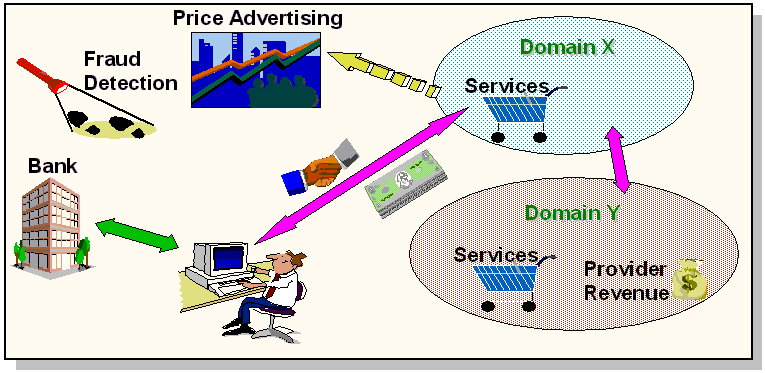
 Contact: Apostolos
Dailianas
Contact: Apostolos
Dailianas

In MarketNet, access to resources in a distributed information and communication system is governed by a market economy, where network elements can purchase and sell services, optimizing their utility measures and maximizing their revenues.
The resources to be traded include physical resources such as CPU cycles, storage, bandwidth, I/O devices or sensors as well as higher-level services such as file storage, name service, database or web service. When failures or attacks lead to loss of resources, prices will rise and limit access to high-priority (high budget) clients or encourage clients to adapt their resource demands.
Like a traditional economy, a provider of services may also be a consumer of other services, both at higher and lower layers. Servers can use this revenue to replicate their services. Thus, the services most valued by their clients are provided with the highest redundancy. It is anticipated that the network currencies are fungible, i.e., exchangeable with traditional currencies.
Since clients requesting resources have to pay for these, the amount of damage a single client can do is limited by their available budget. We are building on existing secure electronic payment systems issued by trusted, secured "central banks" to ensure that clients cannot forge money.
The proposed economic approach enables quantification, analysis, planning and optimization of survivability measures. We will design mechanisms that minimize the transient time to reach a new supply/demand equilibrium after a loss of resources. The availability of network services to priority tasks can be measured by the average cost of network services access. The value lost due to an attack can be measured by the decrease in net revenues generated.
To limit fraud in MarketNet, we develop technologies and an infrastructure
to provide the means of detecting patterns of attacks or fraudulent network
activities in much the same fashion as is commonplace today in typical
transaction processing systems, building upon our research in intrusion
and fraud detection in financial information systems. Here we model temporal
behaviors of agents and patterns of resource access to classify activities
into those that are legitimate and those that seem suspicious and hence
warrant further inspection and authorization. Knowledge about attacks is
to be rapidly and effectively communicated to limit the ability of attackers
to exploit the same techniques in different domains.
![]() This project is a DARPA/ITO-funded
research effort.
This project is a DARPA/ITO-funded
research effort.
Comments to Apostolos
Dailianas